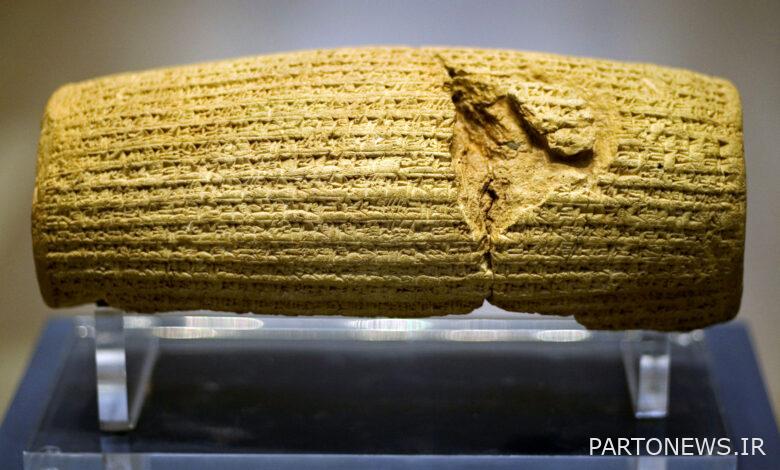Iran is against the transfer of the Cyrus Charter from the British Museum to the National Library of the Zionist regime

The General Directorate of Museums of the Ministry of Cultural Heritage, Tourism and Handicrafts in a letter to the Deputy Director of Cultural Cooperation and Semen of the Ministry of Foreign Affairs and the Secretary General of the UNESCO-Iran National Commission emphasized the “intellectual property rights of the Islamic Republic of Iran based on the Cyrus Charter”.
According to Moj news agency
General Directorate of Museums Ministry of Cultural Heritage, Tourism and Handicrafts In a letter to the Deputy of Cultural Cooperation and Semans of the Ministry of Foreign Affairs and the Secretary General of the UNESCO-Iran National Commission, emphasizing “the intellectual property right of the Islamic Republic of Iran on Cyrus Cylinder“, “Cancellation of the transfer of this artifact from the British Museum to the National Library Israel” demanded.
Some media quoted from the museum Great Britainwhere the Cyrus Charter is kept, announced the transfer and display of this ancient work to the Yale Museum in New Haven, Connecticut, USA for a limited period and reported that this charter is going to be displayed in Jerusalem in a rare event.
Now, the public relations of the Ministry of Cultural Heritage, Tourism and Handicrafts have informed that the General Directorate of Museums in a letter to Amir Hossein Gharibnejad, the Deputy of Cultural Cooperation and Semans of the Ministry of Foreign Affairs and Ali Akbar Metkan, the Secretary General of the National Commission of UNESCO-Iran, expressed their concerns regarding “the transfer of the Cyrus Charter to National Library of the Zionist regime” has announced and demanded “prevention of this action”.
In this letter signed by Hadi Mirzai, the director general of the museums, it is stated: “According to the published news, the British will transfer the Cyrus Charter, which is currently on display in the United States, to the National Library of the occupation regime in Jerusalem from October 4 to November 28. 2024 will take action. It will definitely not be advisable to transfer this historic work that has a global reputation due to the risks it can bring.”
In the continuation of the letter, emphasizing the “intellectual property rights of the Islamic Republic of Iran based on the Cyrus Charter”, “the prohibition of sending and legal actions based on the 1945 Convention on the Protection of Cultural Property in the event of armed conflicts” is requested.
According to the announcement of the British Museum, the charter of Cyrus will remain in America until June 30, 2024, and will be transferred to Jerusalem in October 1403 and will remain there until November 29. This decision was announced by the British Museum while the Israeli regime is at war in the Gaza region, and the International Council of Museums has also warned about the danger of destruction and theft of historical artifacts and the need to protect them in this region.
Shahrokh Razmjo, an archaeologist who was in charge of the “Ancient Iran” collection in the “Middle East” section of the British Museum, said about the Cyrus Charter and the place where this cylinder was discovered and the stories related to it: In 1879, Hormuzd Rasam, a Chaldean archaeologist in the region Babylon” (the current land of Iraq) discovered this cylinder. In the published books about this cylinder, the place of its discovery is given near the village of “Jajmemeh”. Although it is difficult to determine the exact location of the discovery of this cylinder, the prevailing opinion is that Cyrus’ prism was discovered inside a wall in the southern part of this village. After discovering the cylinder, Rasam packed it and sent it to the British Museum. This cylinder was read for the first time by Theo Filos Pinches. He was a cuneiform expert and at first he thought that this prism like other prisms had information about a science, but when he came to the name of Cyrus, he realized that this cylinder is more important than the other cylinders discovered. Because of this, he took the cylinder to “Sir Henry Rawlinson” (who deciphered the cuneiform script). After being read and realizing that it belongs to Iran and Cyrus the Great, the cylinder of Cyrus was introduced to the world by Sir Henry Rawlinson in an official meeting in Germany on the day of the conquest of Babylon on the 7th of November.

